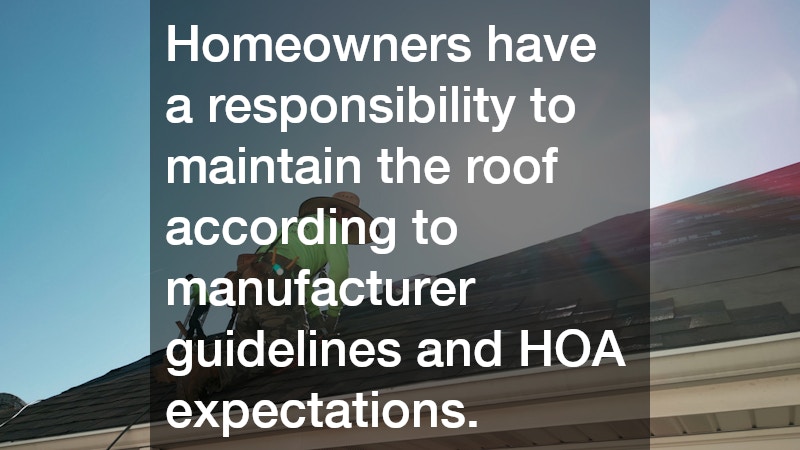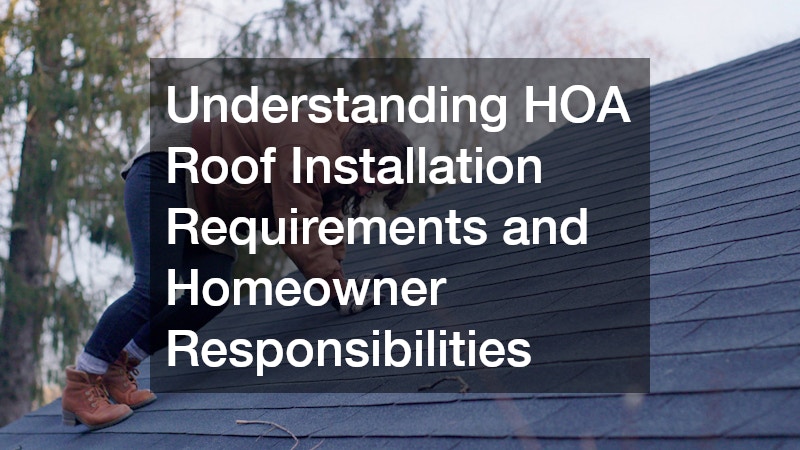Understanding HOA Roof Installation Requirements and Homeowner Responsibilities
Homeowners’ associations (HOAs) play a critical role in maintaining the look, value, and safety of community properties. One of the most significant projects an HOA oversees is roof installation. A roofing project isn’t simply about replacing shingles—it involves a mix of regulations, approvals, and clear communication between homeowners, contractors, and the HOA board. Understanding HOA roof installation requirements and what is expected from homeowners can make the process smoother, reduce disputes, and ensure long-lasting results.
What Are HOA Roof Installation Requirements?
HOA roof installation requirements vary by community but usually stem from the HOA’s governing documents, including the covenants, conditions, and restrictions (CC&Rs). These documents often dictate not only the type of roofing materials allowed but also the color, style, and even specific contractors that can perform the work.
For example, many HOAs enforce consistent aesthetics to preserve property values and maintain a uniform community appearance. This means a homeowner may not choose a roof color or style that clashes with the rest of the neighborhood. Additionally, some HOAs require approval from the architectural review committee (ARC) before any roofing project begins. Submitting detailed plans, including material samples, contractor information, and a timeline, is typically mandatory.
Permits are another key requirement. Even if the HOA approves the project, local municipal building codes must also be followed. Failure to obtain the correct permits can result in fines or having to redo work, so homeowners should always confirm requirements with both the HOA and local authorities.
Homeowner Responsibilities During a Roof Installation
While the HOA sets rules and approves projects, homeowners still have responsibilities that directly affect the success of a roof installation. One of the primary duties is clear communication with the HOA board. Homeowners should provide all requested documentation promptly and keep the board updated on project progress.
Selecting a licensed, insured contractor is also critical. Even if the HOA recommends certain contractors, homeowners may sometimes have a choice. It’s essential to verify credentials, confirm insurance coverage, and check references to avoid delays or potential liability for accidents.
Homeowners must also ensure that their property is prepared for the installation. This may include clearing vehicles, moving outdoor furniture, and protecting landscaping. Roof installation can be disruptive, and taking proactive measures minimizes damage and inconvenience.
Financial responsibility is another key aspect. Many HOAs require homeowners to pay a portion of roof replacement costs or participate in a special assessment fund. Homeowners should review payment schedules, understand deadlines, and ensure timely payments to avoid penalties.
Communicating With Neighbors and the HOA
Roof installation can affect more than just the individual property—it impacts neighboring homes as well. Noise, debris, and construction equipment can be disruptive, so clear communication is vital. Homeowners should notify neighbors of project dates and any potential inconveniences.
Maintaining transparency with the HOA is equally important. Providing updates on project milestones, addressing questions promptly, and following HOA guidelines for working hours and debris removal demonstrates respect for community rules. This collaboration helps prevent conflicts and ensures that the project adheres to all requirements.
In some cases, disputes may arise regarding compliance with HOA standards. Homeowners should be familiar with their rights and the HOA’s dispute resolution process. Many communities offer mediation or arbitration before taking legal action. Understanding this process in advance allows homeowners to handle conflicts professionally and maintain good community relations.
Ensuring Long-Term Roof Performance
A successful HOA roof installation doesn’t end when the last shingle is placed. Homeowners have a responsibility to maintain the roof according to manufacturer guidelines and HOA expectations. Regular inspections, cleaning gutters, and addressing minor repairs promptly can prevent costly damage and extend the life of the roof.
HOAs may also have ongoing monitoring requirements. Some communities conduct annual or biannual inspections to ensure roofs remain in compliance with standards. Homeowners should cooperate fully during these inspections and promptly correct any issues identified.
Choosing quality materials and skilled contractors is another long-term responsibility. While an HOA may have minimum standards, homeowners should prioritize durability and energy efficiency. A well-installed roof not only enhances curb appeal but also reduces maintenance costs and avoids potential disputes with the HOA in the future.
Navigating HOA roof installation requirements and understanding homeowner responsibilities is crucial for a smooth, compliant roofing project. By familiarizing themselves with HOA regulations, maintaining clear communication, preparing their property, and investing in quality materials and contractors, homeowners can ensure a successful outcome. Collaboration between homeowners and the HOA minimizes disruptions, protects property values, and results in a roof that stands the test of time.
Successfully managing a roofing project within an HOA community requires diligence, transparency, and a proactive approach. While the process can seem complex, homeowners who understand their roles and responsibilities can enjoy the benefits of a well-maintained home and a harmonious community.




